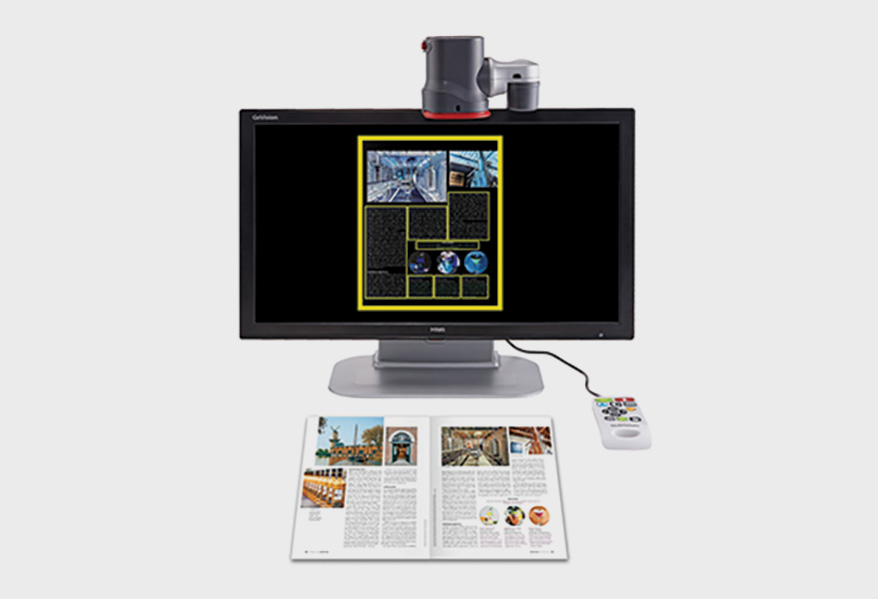THE VISION COUNCIL estimates there are 23.4 million U.S. adults with low vision impairment and conditions, or about 9 percent of all U.S. adults, while around 3.8 million adults act as caregivers for these people. Based on feedback from both caregivers and people self-reporting low vision impairment, about 44 percent frequently use a low vision aid; another 17 percent wear an aid “occasionally” and about 20 percent have used low vision aids at some point in the past. They estimate that 14 percent of adults who experience low vision impairment currently do not wear, and have not worn in the past, a low vision aid to improve their sight.

eSight
eSight 4 with best-match camera and lens technology to provide high-speed, HD video to the patient’s eyes in real-time.
(855) 837-4448, eSightEyewear.com

Eschenbach Optik of America
Vario Digital FHD Advanced Desktop Video Magnifier is foldable and comes with an external remote, an HDMI-in port, dynamic line scrolling on live images and mirror mode.
Advertisement
(800) 487-5389, eschenbach.com

Ocutech
VES Falcon autofocus bioptic telescope is now available in three powers.
(800) 326-6460, ocutech.com

HIMS
GoVision PRO HD video magnifier.
Advertisement
(888) 520-4467, hims-inc.com

OrCam Technologies
OrCam MyEye assistive technology translates what the device sees into spoken language. The Read device works with any text on any surface.
(800) 713-3741, orcam.com

Enhanced Vision
(a Vispero company) Merlin Mini, a portable, foldable, desktop video magnifier with a 3-in-1 rotating camera.
Advertisement
(888) 811-3161, enhancedvision.com

IrisVision
IrisVision smart visual assistive device built on wearable VR technology.
(855) 449-4536, irisvision.com

Ocutrx Vision Technologies
Oculenz ARWear headset for macular degeneration. A second device, ORLenz, is for surgeons to use during procedures.
(844) 970-0900, oculenz.com
Smart Ways to Sell Smart Glass Products
Bryan Wolynski, ODGlasses On First, New York, NY

Initially, I give my low vision patients a ten-minute overview on the phone. When they come in, we do a 90-minute consultation. For example, they may need thicker glasses or magnifiers. Updating their Rx is the easiest solution or increased lighting, for example, with a yellow LED filter for glaucoma patients. We may introduce a telescope for distance. I show them available devices. New technology like OrCam includes AI. Their MyEye attaches to glasses and helps with reading and facial recognition. You can hold their Read device like a pen and push a button for the software to read the text. These devices speak to the patient so there’s no eye fatigue and they’re listening to the information.
Katelyn Jordan, ODBrooks Rehabilitation Center Of Low Vision, Jacksonville, FL

Typically patients are referred to us by ophthalmologists who have diagnosed their eye disease but can’t treat it with medicine. We see what we can do to increase the patient’s remaining vision. We discuss what the patient wants to do and identify where the difficulties are, e.g., if there is a head tremor or a weakness in the hand. We use special charts to get an accurate idea of their vision at different distances. Some glasses and specialty CLs can create significant improvement. Hand-held magnifiers and telescopes are easy-to-use and inexpensive but only work at one distance. Stand magnifiers can be good for reading and a Kindle, for example, can enlarge letters and offer contrast. One of the most versatile devices is eSight. You can walk with it, connect it to a computer, and watch TV. Its price has come down and it is more comfortable to wear.